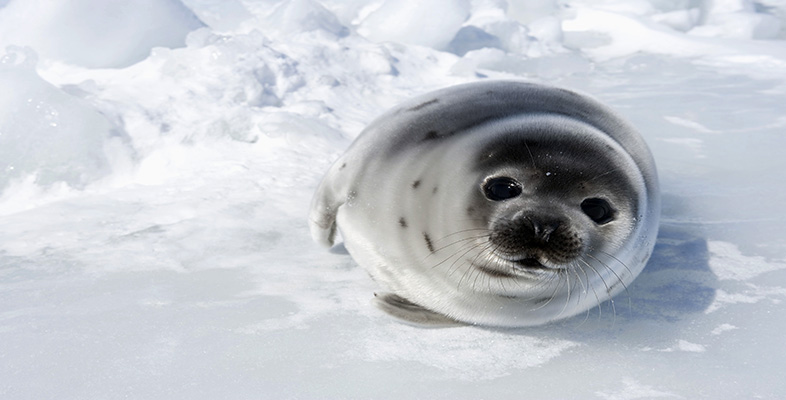5.4 Fatty acids as indicators of diet
Although polar fish and invertebrates are difficult to study alive for the reasons just described, some information about their diet and habits can be obtained from analysis of the lipid composition of their tissues. At high latitudes, the supply of most kinds of marine food changes with the seasons, just as it does on land, and many fish eat little or nothing for long periods, living off their reserves of triacylglycerols. Lipids are major fuels for polar fish and, although many fish have little or no adipose tissue, storage lipids are deposited in the muscles or liver, sometimes in large quantities.
The vertebrate digestive system breaks down proteins, carbohydrates and most other nutrients to amino acids, glucose or other small molecules containing just a few carbon atoms. In contrast, triacylglycerols and phospholipids from membranes are hydrolysed to glycerol and fatty acids, but in simple-stomached animals, the latter are not further broken down: medium- and long-chain fatty acids pass intact into the blood and from there into the tissues.
SAQ 43
Name three different roles that long-chain fatty acids could play in vertebrate tissues.
Answer
The fatty acids may be oxidized for ATP production, or incorporated into the cell fabric, primarily as membrane phospholipids, but also combined with other molecules to form acylated proteins or glycolipids, or re-esterified into storage triacylglycerols. Certain polyunsaturated fatty acids could also become signal molecules.
In carnivores and other simple-stomached animals, almost all the fatty acids deposited in membrane phospholipids and storage triacylglycerols are unaltered, so the fatty acid composition of such components of animal tissue reflects that of the diet over the previous weeks or months. The relationship between diet and tissue composition is different in ruminants such as reindeer: microbes in the rumen convert much of the dietary carbohydrates to short-chain fatty acids, and alter the structure of the plant lipids. The reindeer's liver and adipocytes also synthesize long-chain fatty acids from short-chain fatty acids.
Hundreds of different fatty acids are known from plants, microbes and animals, but many are chemically so similar that until recently, separating and identifying them was slow and difficult. Over the past few decades, instruments such gas-liquid chromatographs have become both more accurate and easier to use, enabling biologists to identify and quantify dozens of different fatty acids in small samples of tissue. Such ‘fatty acid profiles’ are particularly valuable for understanding the diets of cold-water fish such as herring, sprats, capelin, mackerel and halibut, which usually store more lipid than their tropical relatives. In the North Atlantic, these commercially important fish often fluctuate greatly in numbers, and in their flavour and nutritional quality as human food. The causes of changes in their abundance are poorly understood, but may be related to fluctuations in the availability of their prey arising from instability of weather, and movements of sea-ice.
Marine mammals including most kinds of seals and many whales and porpoises also eat fish, usually swallowing their prey whole, and digesting it completely. Most of the prey species contain some storage lipids, which pass almost unmodified into the predators' tissue. The availability of the different kinds of prey species is also major cause of their breeding success. Dietary analysis also enables scientists to monitor the recovery of populations of species after legislation restricting commercial hunting is enforced.
SAQ 44
What anatomical features of these marine mammals would facilitate using fatty acid profiles to obtain information about recent diet?
Answer
The adipose tissue is plentiful and forms superficial blubber that usually receives little blood perfusion. Biopsies of up to a gram of blubber can be taken with minimal injury to the animal. This quantity of tissue yields sufficient triacylglycerols that can be analysed to provide information about what the mammals have been eating. However, the outer layers of blubber, that are cool most of the time, contain more polyunsaturated fatty acids than the inner, warmer layers. Lower perfusion with blood probably also means that triacylglycerols are mobilized and deposited more slowly in the outer layers. To avoid sampling errors, blubber biopsies must always be taken from the same relative depth of blubber (not easy if the total thickness changes with anatomical site and with whole-body fattening).
The conclusions are often surprising, and have revised our understanding of what some kinds of seals and whales are finding to eat, especially in polar regions. Populations of the same species in different areas prove to have quite different diets, indicating that predators must be behaviourally, anatomically and metabolically highly adaptable.
